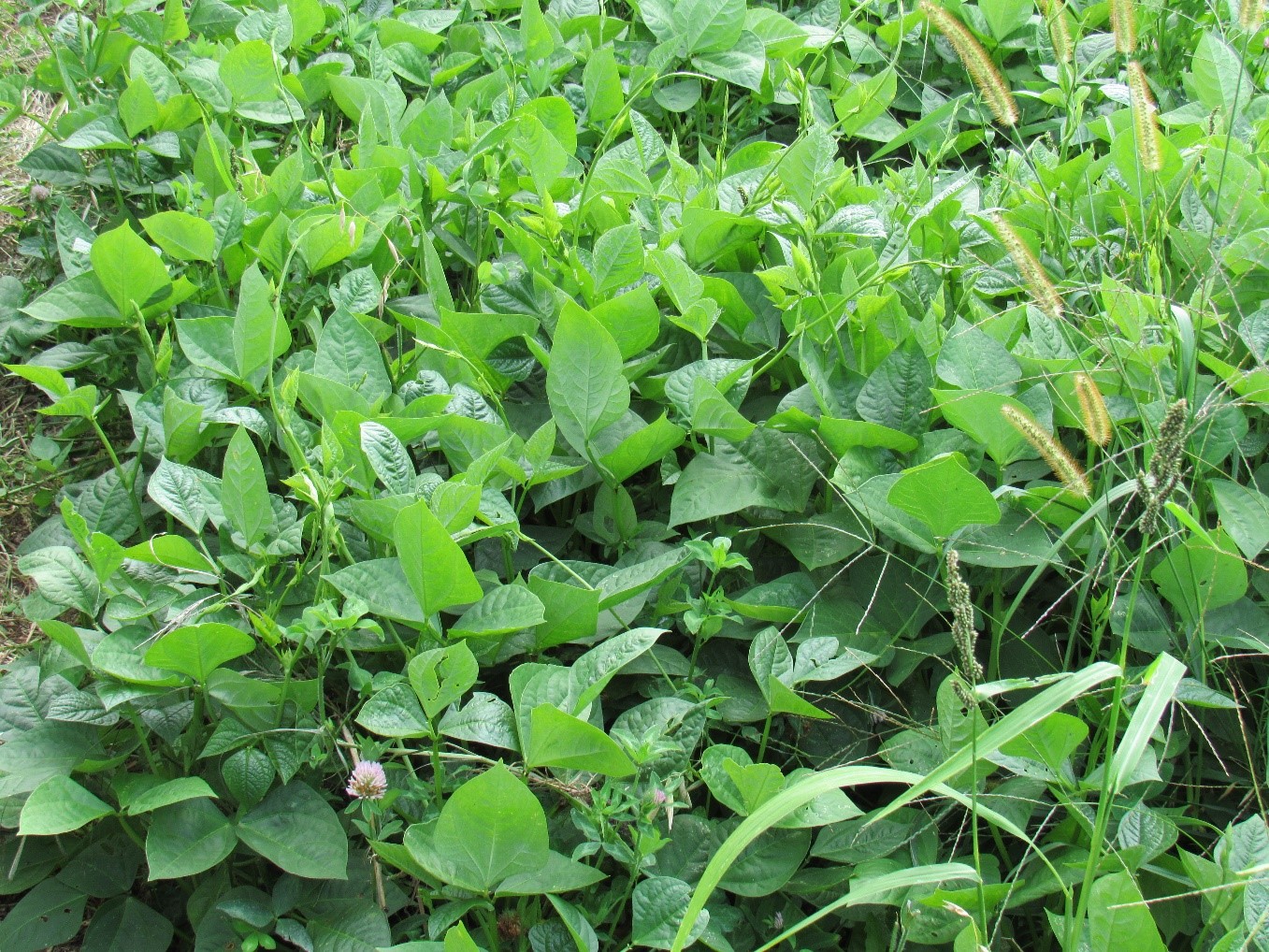BLOOMINGTON, Ill. – Like it or not, fall and winter will be here before we know it. During the off-season, too many gardeners leave their vegetable or flower gardens bare over winter. This can cause major problems for the following growing season, especially an invasion of winter weeds and erosion of high-quality topsoil. Beat the weeds and hang on to your soil this fall, winter and spring by planting a cover crop, or at least putting down some straw.
In case you missed it in our Extension Flowers, Fruits, and Frass blog, the entry Spring cover crops help start the season weed-free shares the benefits of spring cover cropping. Cover cropping for fall into winter is much the same as in spring, so check out the article to get reliable cover crop establishment instructions, how to order from online sources (if you do not have a local seed dealer), how to determine how much seed to get, exact details about how to sow your seed, termination instructions, and most importantly, the four basic “ingredients” needed to be successful:
- Good seed-to soil-contact
- Adequate moisture (every 2nd day irrigation in late summer), to ensure germinating seeds don’t dry out
- Temperatures above freezing (necessary for some, not others)
- Sunlight
“When I began organic gardening about 10 years ago, I always despised the first few days in the garden, in March, to clear weeds so I could plant peas and other spring crops. My hands got cold, my back hurt, and I thought every year, ‘there has to be a better way’,” said Nick Frillman, University of Illinois Extension Local Food Systems and Small Farms educator.
Well, there is! Put out a cover crop this fall; the good news is that you do not need a seed drill to seed cover crops as you can use your hands. Some common cover crop seed for fall and winter including oats, field pea, hairy vetch, various kinds of clover, winter kale, winter rye, and more. If you are worried as you have never done this before or new to cover cropping; a field pea and oats mix is a sturdy, reliable pair of plants to start with.
To get a more thorough background on cover crops before proceeding, do a web search for “James Theuri Cover Crops in Small Gardens”; though retired now, James was a University of Illinois Extension Local Food Systems and Small Farms Educator and his hour-long webinar available on YouTube is full of good information.
If well-executed, cover crop benefits seen in the first year can include increased water infiltration, nitrogen fixation, increased organic matter, subsoil nutrient mining for topsoil release, weed suppression, and more!
Gardeners who put in a cover crop in early September for fall, winter, and spring will experience two additional benefits that spring-only cover croppers will not:
- Greater garden fertilizer nutrient capture: some of that fertilizer that you applied in summer is likely still in the soil, but after winter rains, it is not likely to stick around. Cover crop roots will uptake your money, now in fertilizer form, and turn it into above-ground biomass that will decompose slowly over time, when terminated, fertilizing future crops.
- Rapid spring (re)growth: some cold season cover crops like hairy vetch and winter rye will grow in the fall, die back to the roots for winter, and regrow in spring from roots. This results in improved spring weed suppression and high amounts of biomass that will break down into organic matter later.
At the end of the day, whether cover crops are used in your garden is a personal decision, factoring in time, labor, and cost, to name a few. However, the science is clear that keeping your soil covered is instrumental in preventing topsoil erosion, according to a new study out by Iowa State University. If you do not want to use cover crops, but you want to keep your topsoil for next year and suppress weeds, consider using straw to put your garden to bed for winter.
Straw is locally available, cheap, and potentially effective at suppressing weeds (if you layer it on thick enough). The straw residue will increase snow harvest, blunt the impact of heavy raindrops, and if 3” or more are applied, will block germination of some winter annual weeds. Bonus: straw is usually from wheat, and most bales carry rogue wheat seed. If it germinates in your garden, do not pull it. Wheat is a great winter cover crop.
Keep your soil covered and your garden will thank you later. Be sure to find us at the Flowers, Fruits, and Frass blog for topics like this one at go.illinois.edu/FlowersFruitsFrass. Reach out to the team for questions at the McLean County Extension Office at 309-663-8306.
Photo Caption: Cowpea and Japanese millet summer cover crop (University of Illinois Extension)
SOURCE/WRITER: Nick Frillman, Local Food Systems and Small Farms Educator, Livingston, McLean, and Woodford Counties; 309-663-8306 and frillma2@illinois.edu.
ABOUT EXTENSION: Illinois Extension leads public outreach for University of Illinois by translating research into action plans that allow Illinois families, businesses, and community leaders to solve problems, make informed decisions, and adapt to changes and opportunities.
